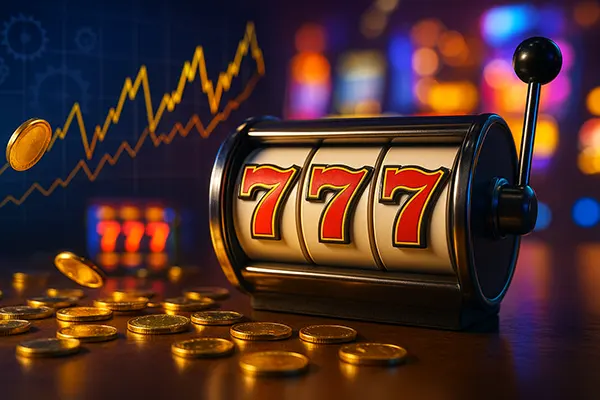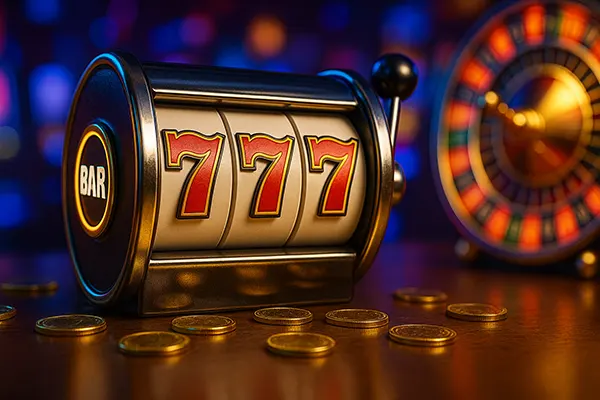
The Mathematics of Slots: How Volatility Affects Your Winnings
Slot machines may appear random and unpredictable, but behind their flashing lights lies a carefully designed mathematical model. Understanding volatility—sometimes called variance—helps players grasp how often and how much a slot can pay out. This knowledge allows for more informed decisions when choosing games that match different playing styles and budgets.
Understanding Slot Volatility
Slot volatility describes the risk level associated with a particular game. In essence, it determines the balance between the frequency of wins and the size of payouts. High-volatility slots deliver large but rare wins, while low-volatility games offer smaller rewards more frequently. Medium-volatility slots strike a balance between the two.
In 2025, most online slot developers like NetEnt, Pragmatic Play and Play’n GO clearly label volatility levels within their game descriptions. This transparency helps players choose games suited to their expectations and bankrolls. For example, a player seeking entertainment over long sessions might prefer a low-volatility slot, while thrill-seekers might opt for a game like “Dead or Alive II,” known for its high variance.
Volatility does not influence a slot’s overall return-to-player (RTP) rate but defines how that RTP is distributed. A 96% RTP with high volatility might mean long losing streaks followed by big wins, whereas the same RTP with low volatility would result in steady, smaller payouts.
How Developers Calculate Volatility
Game studios use complex simulations and statistical models to calculate volatility. They run millions of spins to estimate the average size and frequency of wins, then classify games based on the distribution of results. These calculations rely on algorithms within the random number generator (RNG), ensuring fairness and compliance with gambling regulators.
By adjusting symbol combinations, reel weights and bonus trigger probabilities, developers fine-tune a slot’s behaviour. For instance, a high-variance slot may include rare but valuable bonus rounds, while a low-variance one spreads its rewards through frequent small combinations.
Independent testing agencies such as eCOGRA or iTech Labs verify these figures. In 2025, stricter European Gambling Commission rules require clear statistical reporting, reinforcing trust and transparency for players.
Volatility and Player Strategy
Understanding volatility helps players manage expectations and budgets. Those with limited funds may benefit from low-volatility games that keep their balance steady. Conversely, high-volatility slots require patience and higher bankrolls, as they often involve long losing runs before a major win.
Seasoned players often combine volatility awareness with bankroll management. Setting a fixed budget and choosing a slot that aligns with one’s risk tolerance prevents impulsive spending. For example, many responsible gambling programs in 2025 encourage users to analyse volatility data before playing.
Volatility also influences bonus hunting. Free spins and cashback promotions may perform differently depending on the game’s risk level. Using bonuses on low-variance slots can extend playtime, while applying them to high-variance titles can increase the chance of hitting significant jackpots.
Tools and Features for Analysing Volatility
Modern online casinos now offer analytical tools that allow players to view volatility data, hit frequency and win distribution. Developers like Yggdrasil and Microgaming integrate detailed game statistics into their interfaces, making it easier for users to evaluate performance.
Third-party review sites provide average session outcomes and standard deviation charts for popular slots. This empirical data, available as of 2025, supports more informed choices rather than relying solely on intuition or luck.
Some gambling authorities even require clear volatility labels displayed next to RTP percentages, enabling transparent comparison between games. Such initiatives have made the concept of volatility more accessible to casual players.

The Psychological Impact of Volatility
Volatility not only shapes mathematical outcomes but also affects player psychology. High-variance games produce emotional highs and lows, intensifying excitement and risk perception. Low-variance slots, on the other hand, create a sense of stability and control, appealing to those seeking consistent engagement.
Psychological studies in 2025 highlight how variable reward patterns influence dopamine release, which explains why some players prefer unpredictable high-volatility experiences. Understanding these mechanisms allows for more mindful gaming habits.
Responsible gambling initiatives increasingly address volatility education. By learning how game structure impacts emotional response, players can avoid misconceptions about “luck streaks” and make rational choices aligned with entertainment rather than profit.
Balancing Enjoyment and Responsibility
Knowing the mathematics of volatility encourages a healthier approach to slot play. Players who understand the statistical nature of outcomes are less likely to chase losses or misinterpret random events as patterns.
Modern casinos in regulated markets now include volatility explanations in their responsible gaming sections, ensuring that information complements self-exclusion tools and deposit limits. This alignment between entertainment and responsibility has become an industry standard by 2025.
Ultimately, awareness of volatility transforms slot gaming from a purely chance-based activity into an informed experience where players retain control and realistic expectations.




